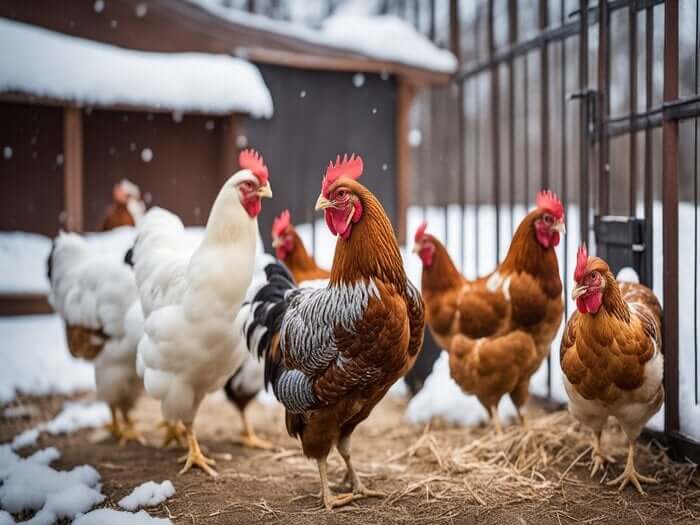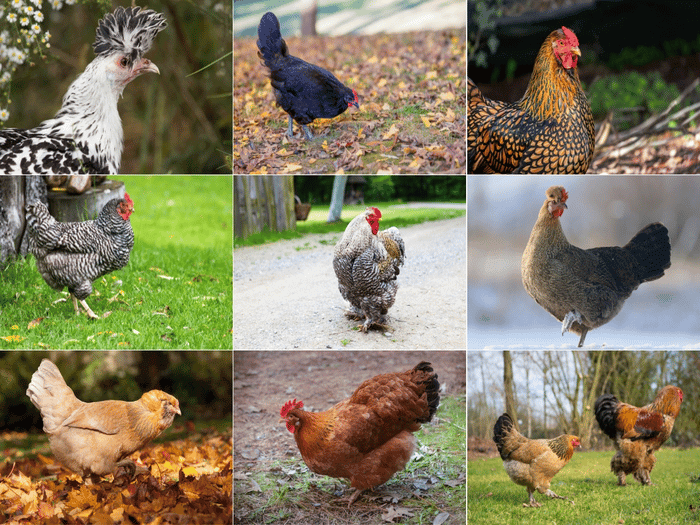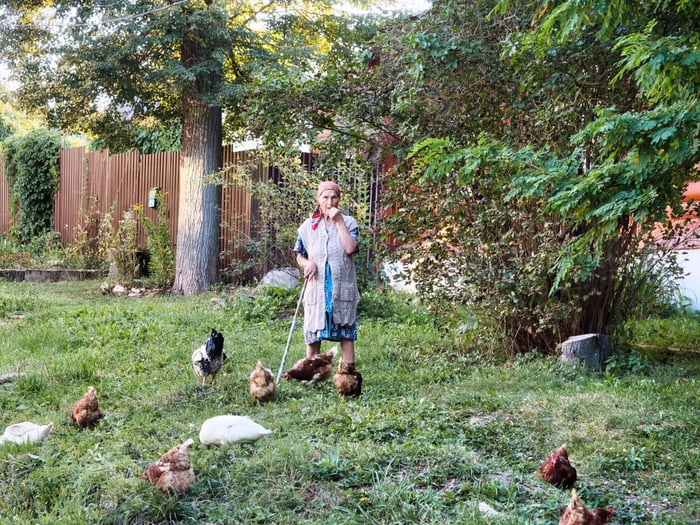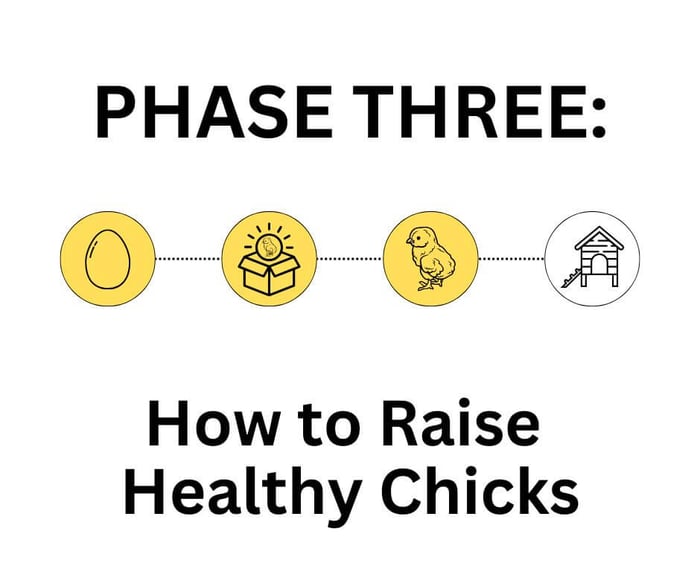Table of Contents
- Why Raising Chickens in Cold Climates Requires Special Care
- Choosing the Best Breeds for Cold Weather
- Top Cold-Hardy Chicken Breeds
- Why Small Combs Matter
- Designing and Preparing a Winter-Ready Chicken Coop
- Key Features of a Cold Climate Coop
- Avoid Heat Lamps
- Feeding and Watering Strategies for Winter
- Feeding Tips
- Water Management
- Managing Egg Production During Winter
- Preventing and Treating Frostbite
- Additional Tips for Raising Chickens in Cold Climates
- Common Challenges and How to Overcome Them
- Conclusion
- FAQs
Raising chickens in cold climates can be a rewarding yet challenging endeavor. If you live in an area where winter temperatures drop significantly, you might wonder how to keep your flock healthy, happy, and productive throughout the chilly months. Chickens are surprisingly resilient creatures, but they do require special care and preparation to thrive in cold weather. This complete guide will walk you through everything you need to know about raising chickens in cold climates, from breed selection to coop design, feeding strategies, and winter care tips.
Why Raising Chickens in Cold Climates Requires Special Care
Chickens evolved in warmer climates, so cold weather poses several risks to their health and productivity. When temperatures drop, chickens face challenges such as:
Cold stress: Prolonged exposure to cold can weaken their immune system.
Frostbite: Especially on combs, wattles, and feet.
Reduced egg production: Shorter daylight hours and cold stress can lower laying rates.
Frozen water: Lack of access to fresh water can lead to dehydration.
Increased feed requirements: Chickens need more calories to maintain body heat.
Understanding these challenges is the first step in successfully raising chickens in cold climates.
Choosing the Best Breeds for Cold Weather
One of the most important factors in raising chickens in cold climates is selecting breeds that are naturally hardy and adapted to colder temperatures. Some breeds have thick feathering, smaller combs, and other traits that help them withstand winter conditions better.
Top Cold-Hardy Chicken Breeds
Plymouth Rock: A dual-purpose breed with dense feathers and a calm temperament.
Wyandotte: Known for its rose comb and fluffy feathers that provide excellent insulation.
Orpington: Large-bodied birds with soft feathers that trap heat effectively.
Ameraucana: Hardy birds with pea combs, reducing frostbite risk.
Rhode Island Red: Adaptable and resilient, they handle cold well.
Why Small Combs Matter
Large, floppy combs and wattles are prone to frostbite in freezing temperatures. Breeds with small or rose combs are less vulnerable. If you already have chickens with large combs, applying protective petroleum jelly during extreme cold can help prevent frostbite.
Designing and Preparing a Winter-Ready Chicken Coop
A well-constructed coop is essential for raising chickens in cold climates. It should provide shelter from wind, snow, and moisture while maintaining good ventilation to prevent respiratory problems.
Key Features of a Cold Climate Coop
Insulation: Use foam boards, straw bales, or other insulating materials to keep the coop warm.
Draft Protection: Seal cracks and gaps to prevent cold drafts but avoid completely airtight conditions.
Ventilation: Install vents near the roof to allow moisture and ammonia to escape without creating direct drafts on the birds.
Elevated Roosts: Chickens naturally roost off the ground to retain body heat.
Deep Litter Bedding: A thick layer of straw or wood shavings helps insulate the floor and generates heat through composting droppings.
Nest Boxes: Keep them cozy and dry with fresh bedding.
 Avoid Heat Lamps
Avoid Heat Lamps
While heat lamps are a common solution, they pose fire risks and can cause uneven heating. Most cold-hardy breeds don’t require supplemental heat if the coop is properly insulated. Instead, focus on coop design and management.
Feeding and Watering Strategies for Winter
Proper nutrition and hydration are critical when raising chickens in cold climates because they need extra energy to stay warm.
Feeding Tips
Increase Calories: Provide a higher-energy feed or supplement with cracked corn and scratch grains.
Feed in the Late Afternoon: This helps chickens generate body heat overnight.
Provide Grit: Chickens need grit to digest grains properly, especially when they cannot forage outdoors.
Offer Treats Sparingly: Healthy treats like cooked vegetables or mealworms can boost nutrition but avoid excess.
Water Management
Prevent Freezing: Use heated waterers or insulated containers.
Change Water Frequently: If you don’t have heated waterers, replace the water multiple times a day.
Monitor Water Intake: Dehydration can be a hidden problem in winter.
Managing Egg Production During Winter
Shorter daylight hours naturally reduce egg laying, but you can help maintain production with some simple techniques.
Lighting
Supplemental Lighting: Provide 12-14 hours of light per day using LED or incandescent bulbs on timers.
Timing: Turn lights on early in the morning rather than late at night to avoid disrupting natural roosting behavior.
Light Intensity: Keep lighting moderate; too bright can stress the birds.
Nest Box Care
Keep nest boxes warm and dry.
Use clean, fresh bedding to encourage laying.
Check regularly for eggs to prevent breakage or spoilage.
Preventing and Treating Frostbite
Frostbite is a common issue in cold climates, especially on exposed areas like combs, wattles, and toes.
Prevention Tips
Apply Petroleum Jelly: Coat combs and wattles before extreme cold spells.
Provide Shelter: Ensure chickens can retreat to a draft-free area.
Avoid Wet Conditions: Wet feathers increase frostbite risk, so keep the coop dry.
Treatment
Warm Soaks: Gently soak frostbitten areas in warm (not hot) water.
Veterinary Care: Severe cases may require professional treatment.
Additional Tips for Raising Chickens in Cold Climates
Separate Aggressive Birds: Bullying can prevent some chickens from eating or staying warm.
Provide Indoor Exercise Space: When snow or ice limits outdoor access, give chickens room to move inside the coop or a secure run.
Regular Health Checks: Monitor for signs of illness or distress.
Plan for Power Outages: Have backup water and heat solutions ready.
Use Reflective Surfaces: Placing reflective materials inside the coop can help retain heat.
Common Challenges and How to Overcome Them
Frozen Water Sources
Frozen water is a major problem in cold climates. Heated waterers are the best solution, but if unavailable, frequent water changes and insulated containers can help.
Snow and Ice Build-Up
Clear snow from run areas regularly and provide covered spaces to protect chickens from harsh weather.
Reduced Foraging
Chickens naturally forage for insects and greens, but frozen ground limits this. Supplement their diet with fresh vegetables and grains to compensate.
Conclusion
Raising chickens in cold climates is entirely possible with the right preparation and care. By choosing cold-hardy breeds, building a warm and well-ventilated coop, managing feed and water carefully, and monitoring your flock closely, you can enjoy fresh eggs and healthy chickens year-round. The key to success lies in understanding your chickens’ needs during winter and proactively addressing the challenges cold weather brings.
With this complete guide on raising chickens in cold climates, you are now equipped with expert tips and practical strategies to keep your flock thriving no matter how low the temperatures drop. Embrace the winter season with confidence and enjoy the unique satisfaction of caring for your backyard chickens all year long!
If you want more personalized advice or have specific questions about your flock, feel free to reach out. Happy chicken keeping!
FAQs
Do I need to heat the coop in winter?
Most cold-hardy chickens do not require supplemental heat if the coop is insulated and draft-free. Heat lamps are generally discouraged due to fire risks. However, in extremely cold conditions, safe supplemental heat sources may be used cautiously.
Why do chickens eat more in winter?
Chickens need extra calories in cold weather to maintain their body heat. Increasing feed and providing energy-rich treats like cracked corn helps them stay warm.
Can chickens go outside in the snow?
Yes, chickens can go outside in snow if they have a safe, dry, and wind-protected run. However, limit outdoor time during extreme cold or icy conditions to prevent stress and injury.
How should I prepare my chicken coop for winter?
Insulate the coop, seal drafts, ensure proper ventilation without direct drafts, provide elevated roosts, and use deep litter bedding to keep chickens warm and dry during cold months.


.png)




